Pharmacological properties
Pharmacodynamics. acetylsalicylic acid belongs to the group of non-steroidal anti-inflammatory drugs, exhibits analgesic, antipyretic and anti-inflammatory effects. the mechanism of action of acetylsalicylic acid consists in the irreversible inactivation of the COX enzyme, which plays an important role in the synthesis of prostaglandins.
When taken orally in doses of 0.3-1 g, acetylsalicylic acid is used to relieve pain and conditions accompanied by fever, such as a cold, to reduce body temperature and reduce joint and muscle pain.
Acetylsalicylic acid suppresses platelet aggregation by blocking the synthesis of thromboxane A 2.
The water-soluble vitamin ascorbic acid is part of the body’s defense system against oxygen radicals and other oxidants of endogenous and exogenous origin, which play a special role in inflammatory processes and the functioning of leukocytes.
The results of in vitro and ex vivo studies showed that ascorbic acid has a positive effect on the leukocyte immune response in humans.
Ascorbic acid is necessary for the synthesis of intracellular substances (mucopolysaccharides), which, together with collagen fibers, are responsible for the integrity of capillary walls and thus reduce vascular permeability.
Addition of ascorbic acid to acetylsalicylic acid reduces indicators of damage to the gastrointestinal tract and oxidative stress. These benefits may be the result of an improved tolerability profile of the combination of acetylsalicylic acid with ascorbic acid compared with acetylsalicylic acid used alone.
Pharmacokinetics. After ingestion, acetylsalicylic acid is quickly and completely absorbed in the gastrointestinal tract. During and after absorption, it is transformed into the main active metabolite – salicylic acid. C max of acetylsalicylic acid in blood plasma is reached after 10-20 minutes, salicylates – after 20-120 minutes, respectively.
Acetylsalicylic and salicylic acids are completely bound to blood plasma proteins and are quickly distributed in the body. Salicylic acid penetrates through the placenta and into breast milk.
Salicylic acid undergoes metabolism in the liver. Metabolites of salicylic acid are salicyluric acid, salicylphenol glucuronide, salicylacyl glucuronide, gentisic acid and gentisinuric acid.
The kinetics of elimination of salicylic acid depends on the dose, since the metabolism is limited by the activity of liver enzymes. T ½ depends on the dose and increases from 2-3 hours when used in low doses to 15 hours – when used in high doses.
Salicylic acid and its metabolites are excreted from the body mainly by the kidneys.
After oral administration, ascorbic acid is absorbed in the intestine by a Na + -dependent active transport system, most actively in the proximal part of the intestine. Absorption is not proportional to the dose. When increasing the daily oral dose of ascorbic acid, its concentration in blood plasma and other body fluids does not increase proportionally, but tends to approach the upper limit.
Ascorbic acid is filtered by the glomerular system of the kidneys and reabsorbed by proximal tubules under the action of an active Na + dependent process. The main metabolites are excreted in the urine in the form of oxalates and diketogulonic acid.
Indication
Mild or moderate pain such as headache, toothache, periodic pain in women, pain symptoms associated with colds (eg headache, sore throat, pain in limbs).
Fever.
Application
Aspirin is taken orally after meals. effervescent tablets are dissolved in a glass of water immediately before taking. the dose of the drug is calculated for acetylsalicylic acid.
Aspirin C can be taken longer than 3-5 days without consulting a doctor.
Adults and children aged 15 and over. 1-2 effervescent tablets as a single dose. Repeated intake is possible after 4-8 hours. The maximum daily dose should not exceed 10 tablets (4 g).
Reservation. For patients with concomitant disorders of liver or kidney function, the dose of the drug should be reduced or the interval between doses should be increased.
Contraindication
Hypersensitivity to acetylsalicylic acid, other salicylates, ascorbic acid or any component of the drug. ba, caused by the use of salicylates or other nonsteroidal anti-inflammatory drugs in the anamnesis. acute gastrointestinal ulcers. hemorrhagic diathesis. severe kidney diseases; pronounced renal failure. urolithiasis. pronounced liver failure. pronounced heart failure. tendency to thrombosis, thrombophlebitis. diabetes combination with methotrexate at a dosage of ≥15 mg/week (see interactions).
Side effects
Gastrointestinal disorders: dyspepsia, epigastric pain and abdominal pain, heartburn, diarrhea, nausea, vomiting, stomach cramps; in some cases – inflammation of the gastrointestinal tract, erosive-ulcerative lesions of the gastrointestinal tract, which can in isolated cases lead to gastrointestinal bleeding and perforation with corresponding laboratory and clinical manifestations; rarely – transient liver failure with an increase in the level of liver transaminases.
Blood system and lymphatic system. As a result of its antiplatelet effect on platelets, acetylsalicylic acid can increase the risk of bleeding. The following bleedings were observed: PERIOPERATIVE bleeding, hematomas, bleeding from the organs of the genitourinary system, nosebleeds, bleeding from the gums; rarely or very rarely – serious bleeding, such as gastrointestinal bleeding and cerebral hemorrhage (especially in patients with uncontrolled arterial hypertension and / or with simultaneous use of anticoagulants), which in some cases can be potentially life-threatening.
Bleeding can lead to acute and chronic posthemorrhagic anemia / iron-deficiency anemia (due to so-called hidden microbleeding) with corresponding laboratory manifestations and clinical symptoms, such as asthenia, pallor of the skin, hypoperfusion. Hemolysis and the development of hemolytic anemia have been reported in patients with severe glucose-6-phosphate dehydrogenase deficiency.
Immune system: in patients with individual hypersensitivity to salicylates, the development of allergic reactions is possible, including such symptoms as rash, urticaria, itching, eczema, rhinitis, nasal congestion, lowering of blood pressure. Severe hypersensitivity reactions, including anaphylactic shock, angioedema, and noncardiogenic pulmonary edema, have been observed very rarely.
Patients with bronchial asthma may have an increased frequency of bronchospasm, mild to moderate allergic reactions that potentially affect the skin, respiratory system, gastrointestinal tract, and cardiovascular system.
Nervous system: headache, dizziness, hearing impairment; ringing in the ears and confusion, which may indicate an overdose. Sleep disturbance.
Others: a feeling of heat.
With long-term use in high doses, the following are possible: damage to the glomerular apparatus of the kidneys, the formation of urate and / or oxalate stones in the kidneys and urinary tract, renal failure; damage to the insular apparatus of the pancreas (hyperglycemia, glycosuria) and disruption of glycogen synthesis up to the development of diabetes; myocardial dystrophy; thrombocytosis, hyperprothrombinemia, erythrocytopenia, neutrophilic leukocytosis, hemolytic anemia; decrease in permeability of capillaries (possible deterioration of tissue trophism, increase in blood pressure); in patients with glucose-6-phosphate dehydrogenase deficiency, it can cause hemolysis of erythrocytes; dysbacteriosis of the oral cavity; disturbance of zinc, copper metabolism.
Special instructions
The drug is used with caution in case of hypersensitivity to analgesic, anti-inflammatory, anti-rheumatic agents, as well as in case of allergy to other substances; gastrointestinal ulcers in the anamnesis, including chronic or recurrent ulcer disease or gastrointestinal bleeding in the anamnesis; simultaneous use of anticoagulants; impaired renal function or impaired blood circulation (for example, renal vascular disease, congestive heart failure, dehydration, massive surgery, sepsis, or significant blood loss), as acetylsalicylic acid may further increase the risk of kidney damage and lead to APN; liver function disorders.
In patients with allergic complications, including asthma, allergic rhinitis, urticaria, skin itching, swelling and polyposis of the nasal mucosa, as well as in their combination with chronic respiratory tract infections and in patients with hypersensitivity to NSAIDs on the background of drug treatment possible development of bronchospasm, asthma attack or other hypersensitivity reactions.
Due to its effect of suppressing platelet aggregation, which lasts up to several days after the use of acetylsalicylic acid, the drug can increase the tendency to bleeding during and after surgical operations (including minor operations, such as tooth extraction).
When using acetylsalicylic acid in low doses, the excretion of uric acid may decrease. This can lead to gout in patients with reduced uric acid excretion.
In patients with glucose-6-phosphate dehydrogenase deficiency, acetylsalicylic acid can cause hemolysis or hemolytic anemia. Factors that increase the risk of hemolysis are, for example, the use of high doses, fever or acute infections.
Long-term use of analgesics can lead to headaches.
Frequent use of painkillers can cause temporary kidney failure with the risk of kidney failure (analgesic nephropathy). The risk is especially high when several different analgesics are used at the same time.
1 effervescent tablet of Aspirin C contains 466.4 mg of sodium, which should be taken into account by patients on a sodium-restricted diet.
Ascorbic acid should be used with caution in patients prone to calcium oxalate nephrolithiasis or recurrent urolithiasis.
When taking the drug in high doses and long-term treatment, it is necessary to monitor kidney function and blood pressure level, as well as the function of the pancreas. The drug should be used with caution in patients with a history of mild and moderate kidney disease. Since ascorbic acid increases the absorption of iron, its use in high doses can be dangerous for patients with hemochromatosis, thalassemia, polycythemia, leukemia and sideroblastic anemia. Patients with a high content of iron in the body should use the drug in minimal doses.
Simultaneous administration of the drug with an alkaline drink, fruit or vegetable juices reduces the absorption of ascorbic acid. Also, the absorption of ascorbic acid can be disturbed with intestinal dyskinesia, enteritis, and achilles. Ascorbic acid as a reducing agent can affect the results of laboratory tests, for example, when determining the blood glucose, bilirubin, activity of transaminases, lactate dehydrogenase, etc. Since ascorbic acid has a mild stimulating effect, the drug is not recommended to be taken at the end of the day. Long-term use of ascorbic acid in high doses can accelerate its own metabolism, due to which paradoxical hypovitaminosis is likely to occur after treatment is discontinued. Do not exceed the recommended dose. It should not be used simultaneously with other drugs containing acetylsalicylic acid and vitamin C. The drug should be used with caution in polycythemia, leukemia. There may be falsely negative results of the examination of the presence of hidden blood in the feces.
The period of pregnancy and breastfeeding. Pregnancy. The drug can be used during pregnancy only when other drugs are ineffective and only after assessing the risk / benefit ratio.
Inhibition of prostaglandin synthesis may adversely affect pregnancy and/or embryonic/uterine development. Available data from epidemiological studies indicate a risk of miscarriage and fetal malformations after the use of prostaglandin synthesis inhibitors in early pregnancy. The risk increases depending on the dose and duration of therapy. According to the available data, the connection between taking acetylsalicylic acid and an increased risk of miscarriage has not been confirmed.
The available epidemiological data on the occurrence of malformations are not consistent, but an increased risk of gastroschisis cannot be excluded with the use of acetylsalicylic acid. The results of a prospective study of exposure in early pregnancy (1-4 months) involving approximately 14,800 woman-child pairs do not indicate any association with an increased risk of malformations.
Animal studies indicate reproductive toxicity.
In the I and II trimesters of pregnancy, preparations containing acetylsalicylic acid should not be prescribed without a clear clinical need. In women who are likely to be pregnant or in the I and II trimesters of pregnancy, the dose of drugs containing acetylsalicylic acid should be as low as possible, and the duration of treatment should be as short as possible.
In the III trimester of pregnancy, all inhibitors of prostaglandin synthesis can affect the fetus as follows:
- cardiopulmonary toxicity (with premature closure of the ductus arteriosus and pulmonary hypertension);
- impaired kidney function with possible further development of renal failure with oligohydramnios.
Inhibitors of prostaglandin synthesis can affect a woman and the fetus at the end of pregnancy in the following ways:
- the possibility of prolongation of bleeding time, an antiplatelet effect that can occur even after very low doses;
- inhibition of uterine contractions, which can lead to a delay or increase in the duration of childbirth.
Taking into account the above, acetylsalicylic acid is contraindicated in the III trimester of pregnancy.
Fertility There is some evidence that drugs that inhibit the synthesis of prostaglandins can disrupt reproductive function in women due to the effect on ovulation. This phenomenon is reversible and disappears after treatment is discontinued.
Breast feeding. Salicylates and their metabolites enter breast milk in small amounts. Therefore, their use is possible during breastfeeding. But due to the fact that the drug contains ascorbic acid, you should refrain from taking the drug during breastfeeding, since ascorbic acid penetrates into breast milk.
Children. The drug is used in children aged 15 and over. Do not use drugs containing acetylsalicylic acid in children with SARS, which is accompanied or not accompanied by an increase in body temperature without consulting a doctor. With some viral diseases, especially influenza A, B and chicken pox, there is a risk of developing Reye’s syndrome, which is a very rare but life-threatening condition that requires immediate medical attention. The risk may be increased if acetylsalicylic acid is used as a concomitant medication, but a causal relationship in this case has not been proven. If these conditions are accompanied by prolonged vomiting, this may be a sign of Reye’s syndrome.
The ability to influence the speed of reaction when driving a motor vehicle or working with other mechanisms. Not noted.
Interactions
Contraindicated combinations. the use of this drug in doses ≥15 mg/week increases hematological toxicity of methotrexate (reduction of renal clearance of methotrexate by anti-inflammatory agents and displacement of methotrexate from the connection with blood plasma proteins by salicylates).
Combinations that should be used with caution. When using methotrexate in doses of 15 mg/week, hematological toxicity of methotrexate increases (reduction of renal clearance of methotrexate by anti-inflammatory agents and displacement of methotrexate from the connection with blood plasma proteins by salicylates). Simultaneous use of ibuprofen prevents irreversible inhibition of platelets by acetylsalicylic acid. Ibuprofen treatment of patients at increased risk of cardiovascular disease may limit the cardioprotective effect of acetylsalicylic acid.
With the simultaneous use of salicylates in high doses with NSAIDs (as a result of synergism), the risk of ulcers and gastrointestinal bleeding increases. With the simultaneous use of Aspirin C and anticoagulants, the risk of bleeding increases.
Simultaneous use with uricosuric agents, such as benzobromarone, probenecid, reduces the excretion of uric acid (due to competition with the excretion of uric acid by the renal tubules).
With simultaneous use with digoxin, the concentration of the latter in the blood plasma increases due to a decrease in renal excretion.
With the simultaneous use of acetylsalicylic acid in high doses and oral antidiabetic drugs of the group of sulfonylurea derivatives or insulin, the hypoglycemic effect of the latter increases due to the hypoglycemic effect of acetylsalicylic acid and the displacement of sulfonylurea bound to blood plasma proteins.
Diuretics in combination with high doses of acetylsalicylic acid reduce glomerular filtration due to a reduction in the synthesis of prostaglandins in the kidneys.
Systemic corticosteroids (excluding hydrocortisone, which is used for replacement therapy in Addison’s disease) during corticosteroid treatment reduce the level of salicylates in the blood and increase the risk of overdose after the end of treatment, as well as the risk of gastrointestinal bleeding.
ACE inhibitors in combination with high doses of acetylsalicylic acid cause a decrease in glomerular filtration due to inhibition of vasodilating prostaglandins and a decrease in the hypotensive effect.
Selective serotonin reuptake inhibitors: increased risk of upper gastrointestinal bleeding due to possible synergism.
When used simultaneously with valproic acid, acetylsalicylic acid displaces it from binding to blood plasma proteins, increasing the latter’s toxicity.
Ethyl alcohol promotes damage to the mucous membrane of the gastrointestinal tract and prolongs the bleeding time due to the synergism of acetylsalicylic acid and alcohol.
Ascorbic acid reduces the toxicity of sulfonamide drugs, reduces the effect of heparin and indirect anticoagulants, promotes the assimilation of iron, increases the absorption of penicillin, ethinyl estradiol, aluminum (must be taken into account when using antacids containing aluminum); enhances the side effects of salicylates (risk of crystalluria). Drugs of the quinoline series, calcium chloride, salicylates, and corticosteroids reduce vitamin C reserves in the body with long-term use. With simultaneous use, ascorbic acid reduces the chronotropic effect of isoprenaline; in high doses – increases the excretion of mexiletine by the kidneys. Barbiturates and primidone increase urinary excretion of ascorbic acid. Ascorbic acid reduces the therapeutic effect of neuroleptics (phenothiazine derivatives), tubular reabsorption of amphetamine and tricyclic antidepressants. Taking ascorbic acid simultaneously with deferoxamine increases tissue toxicity of iron, especially in the heart muscle, which can lead to circulatory decompensation. Ascorbic acid can be taken 2 hours after deferoxamine injection. In high doses, ascorbic acid affects the resorption of vitamin B12. Ascorbic acid increases the excretion of oxalates in the urine, thus increasing the risk of oxalate stones.
Overdose
An overdose of salicylates is possible due to chronic intoxication, which occurred as a result of long-term therapy (use at a dose of 100 mg/kg/day for more than 2 days can cause toxic effects), as well as due to acute intoxication, which can be life-threatening (overdose), and reasons which may be, for example, accidental use by children or an unexpected overdose.
Chronic poisoning with salicylates can be hidden, as its symptoms are nonspecific. Moderate chronic intoxication caused by salicylates, or salicylism, is noted, as a rule, only after repeated administration in high doses.
Symptoms Dizziness, ringing in the ears, deafness, hyperhidrosis, nausea and vomiting, headache, confusion. These symptoms can be controlled by reducing the dose. Ringing in the ears can be noted when the concentration of salicylates in the blood plasma is 150-300 μg/ml. More serious side reactions are detected at a concentration of salicylates in the blood plasma of 300 μg/ml.
Acute intoxication is indicated by a pronounced change in the acid-base balance, which depends on the age of the patient and the severity of intoxication. In children, the most characteristic manifestation is metabolic acidosis. The severity of the condition cannot be assessed only on the basis of the concentration of salicylates in the blood plasma. Absorption of acetylsalicylic acid can be slowed down due to delayed gastric release, formation of concretions in the stomach or in the case of taking the drug in the form of enteric-coated tablets.
Due to the complex pathophysiological effects, signs and symptoms of salicylate poisoning can be:
Intoxication from weak to moderate – tachypnea, hyperpnea, respiratory alkalosis. Sweating, nausea and vomiting.
Intoxication from moderate to severe – respiratory alkalosis, which is accompanied by compensatory metabolic acidosis, hyperpyrexia. From the respiratory system: from hyperpnea, non-cardiogenic pulmonary edema to respiratory arrest and asphyxia. From the side of the cardiovascular system: from arrhythmia, hypotension to cardiac arrest. Dehydration, oliguria up to renal failure is also observed; glucose metabolism disorders, ketosis; gastrointestinal bleeding; hematological changes – from suppression of platelets to coagulopathy. From the side of the nervous system: toxic encephalopathy and depression of the central nervous system, manifested in the form of drowsiness, depression of consciousness up to the development of coma and convulsions.
From the laboratory and other indicators: alkalemia, alkaluria, acidemia, aciduria, changes in blood pressure, changes on the ECG, hypokalemia, hypernatremia, hyponatremia, changes in kidney function, hyperglycemia, hypoglycemia (especially in children). Increased level of ketone bodies, hypoprothrombinemia.
Overdose of ascorbic acid. Ascorbic acid is a water-soluble vitamin, its excessive amount is excreted in the urine.
Acute and chronic overdoses caused by ascorbic acid have been reported in the literature. In patients with glucose-6-phosphate dehydrogenase deficiency, an overdose of ascorbic acid can cause oxidative hemolysis, DIC and a significant increase in oxalates in serum and urine. It has been established that an elevated level of oxalates leads to calcium deposition in patients undergoing dialysis. In addition, there are several reports that high doses of vitamin C both orally and intravenously can provoke the formation of calcium-oxalate stones in the kidneys, the development of calcium-oxalate crystalluria in patients prone to increased salt crystallization, the development of tubulointerstitial nephropathy, as well as OPN due to stone formation in the kidneys.
With long-term use of vitamin C in high doses, it is possible to inhibit the function of the insular apparatus of the pancreas, which requires monitoring of the condition of the latter.
The use of vitamin C in high doses can cause vomiting, nausea or diarrhea, which disappear after its withdrawal.
Treatment of intoxication caused by an overdose of acetylsalicylic acid is determined by the degree of severity, clinical symptoms and is provided by standard methods used in poisoning (gastric lavage, use of activated charcoal, forced diuresis). All measures should be aimed at accelerating the elimination of the drug and restoring the electrolyte and acid-base balance. Depending on the state of acid-alkaline balance and electrolyte balance, electrolyte solutions are administered by infusion. In case of severe poisoning, hemodialysis is indicated.
Storage conditions
At a temperature not higher than 25 °C.

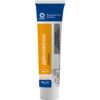
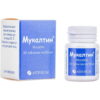

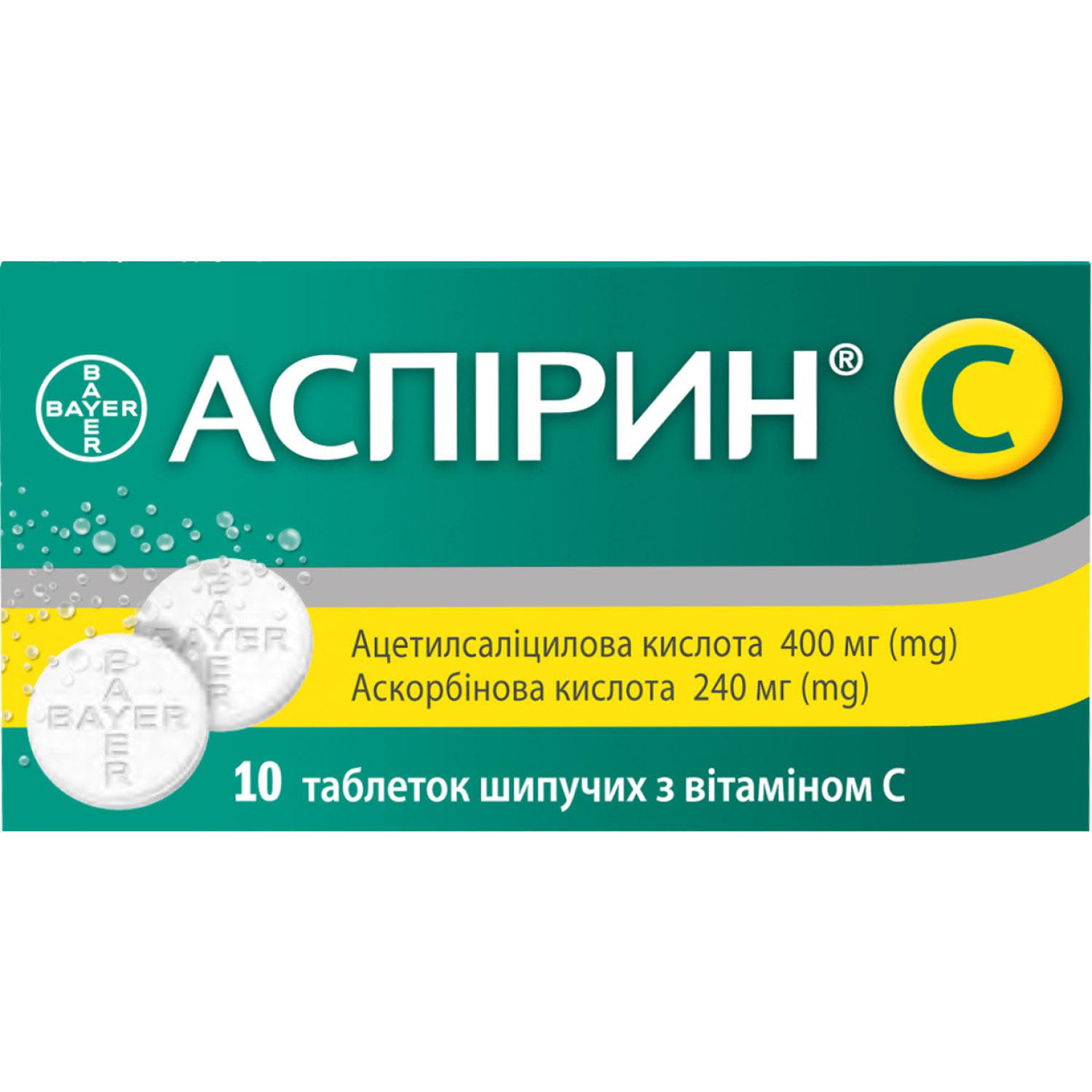
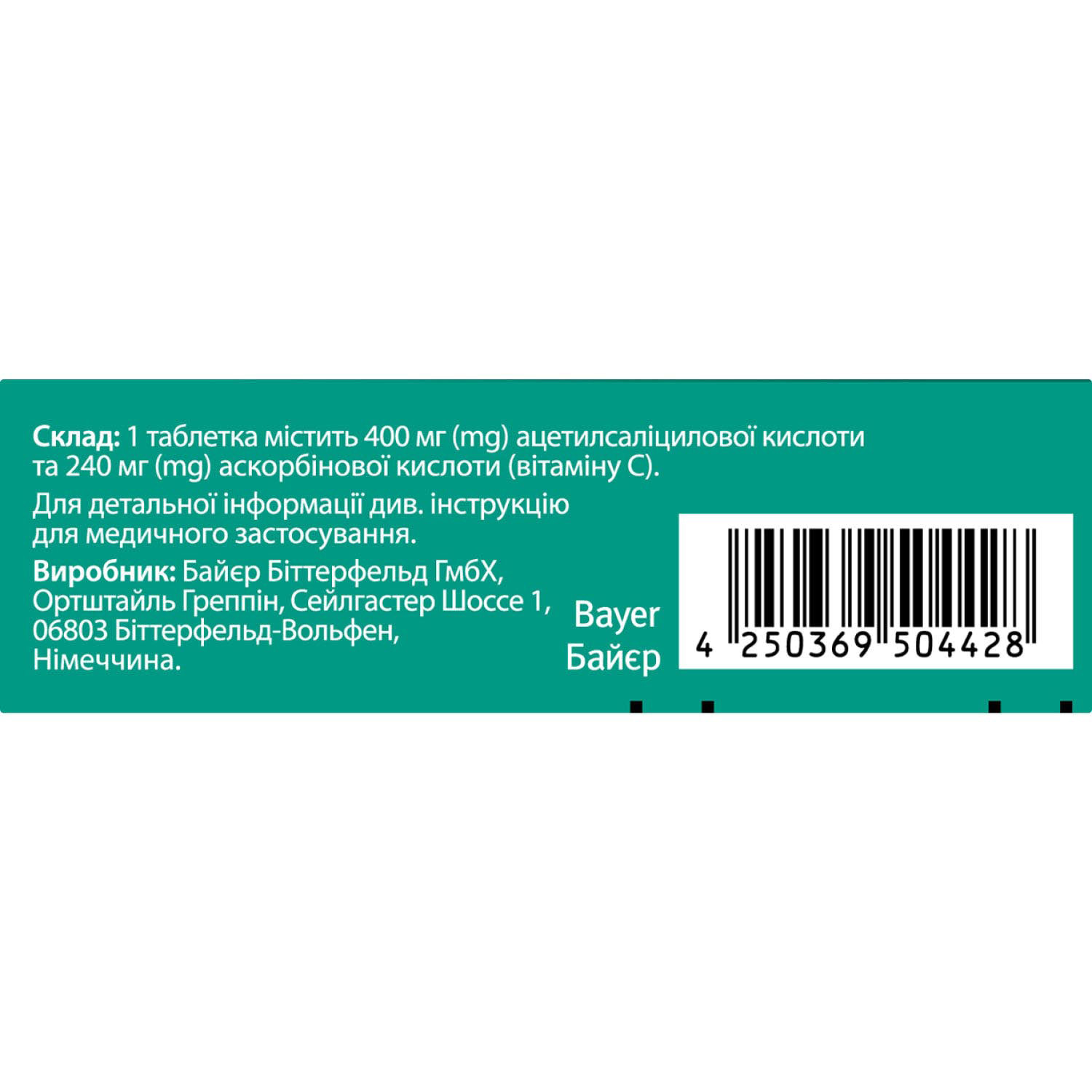
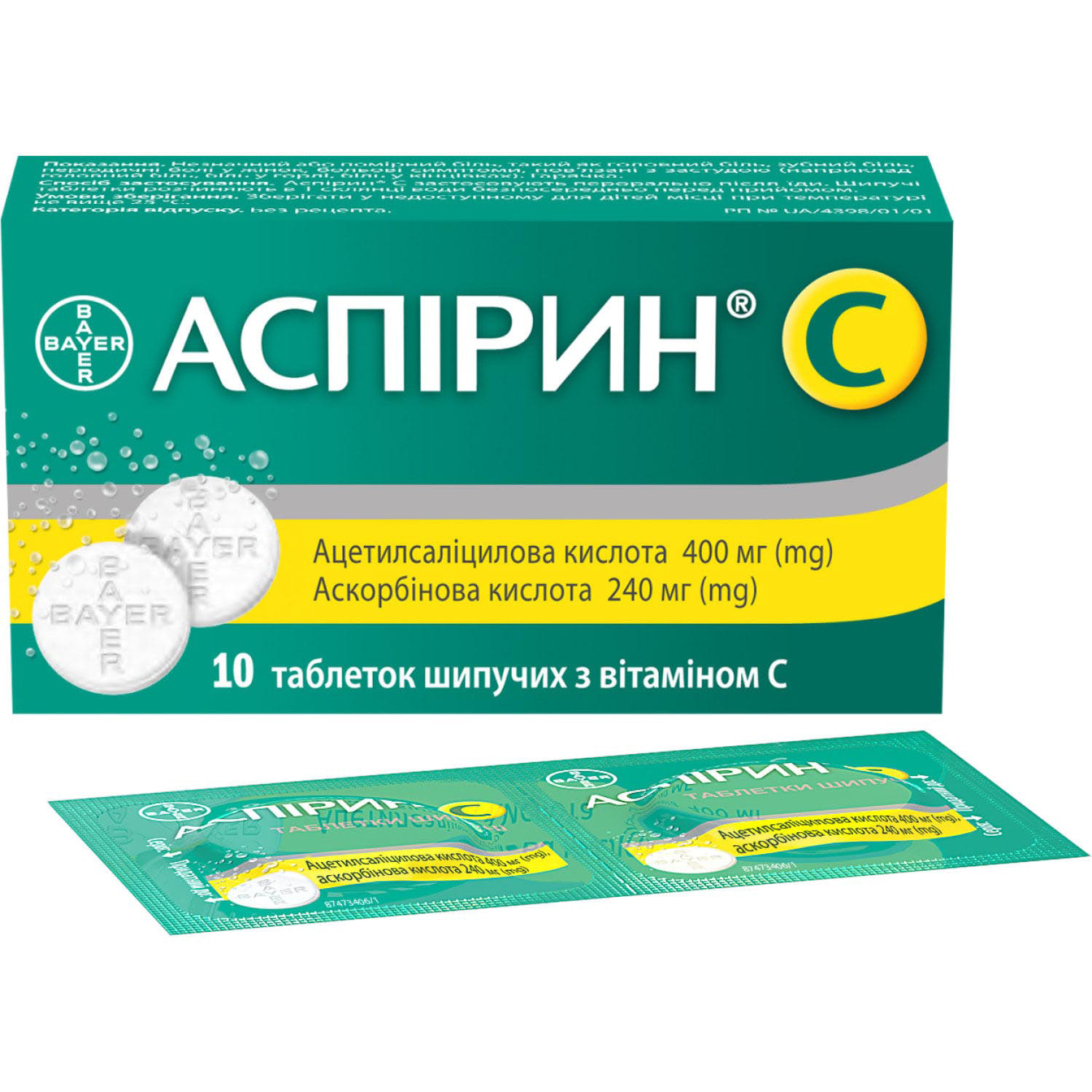

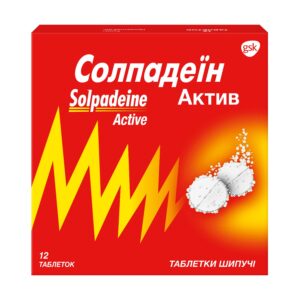
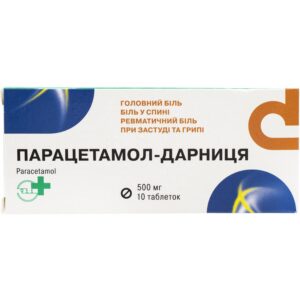
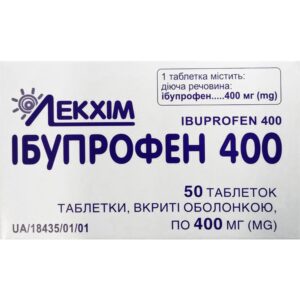
Reviews
There are no reviews yet.